Edward Gorey - Gifted Gallery
- Lilium
- Oct 18, 2020
- 7 min read

Edward St. John Gorey 22 February 1925, was an American writer and artist noted for his illustrated books. His characteristic pen-and-ink drawings often depict vaguely unsettling narrative scenes in Victorian and Edwardian settings.
When I was about 12 my parents and I traveled up to the seaside town of Mumbles for an event. We stayed in a Victorian seaside house 4 floors high, painted in lemon yellow and teal with beautiful views over the cove, the apartment was at the top of an almost uncountable amount of stairs. Once you reached the top and opened the door, there was no way from the magnolia walls of the stairwell, that you would guess what was inside. The walls were Indian yellow with a blue trim, an electric piano sat where a hall stand would be, a framed poster of the Beatles Yellow Submarine hung above it.
The windows were all open for the summer sea breeze and a man in one of the apartments across the street was signing as he manoeuvred round his home, appearing in one illuminated window, then the next . Opera, jazz, 80s disco: I couldn't tell but it sounded good as his song drifted through the evening air. Not everyone in the street was home but the ones that did had their lights on and their windows open, listening to the sea and the singer.
Next to the kitchen was a door. You would assume it was a linen cupboard but open it and the last thing you expected is on the other side. Pink. A mid century bathroom with all dusky pink porcelain, the sink, the bathtub, all...pink.

Sat on a small stool next to the bath was a book with stark black and white drawings on the cover. The Gashly Crumb Teenies. I had never seen a title like that or artwork like that before.
I picked it up, got into the empty dusky pink bathtub and devoured the book with its sinister story and gothic drawings, as the song faded in and out from the man across the street.
Edward Gorey's work undoubtedly inspired my own illustrations and writing. It certainly aided my dark sense of humour inherited from my father. His work may be macabre but he certainly made remembering the alphabet a whole lot more amusing.
Edward St. John Gorey was born in Chicago. Gorey's maternal great-grandmother, Helen St. John Garvey, was a popular nineteenth-century greeting card writer and artist, from whom he claimed to have inherited his talents.
From 1934 to 1937, Gorey attended public schools in the Chicago suburb of Wilmette, Illinois, where his classmates included Charlton Heston and Warren MacKenzie. After that, he attended the Francis W. Parker School in Chicago. He spent 1944 to 1946 in the Army at Dugway Proving Ground in Utah. He then attended Harvard University, beginning in 1946 and graduating in the class of 1950; he studied French and roomed with poet Frank O'Hara.
In the early 1950s, Gorey, with a group of recent Harvard alumni including Alison Lurie, John Ashbery, Donald Hall and O'Hara, amongst others, founded the Poets' Theatre in Cambridge Massachusetts, which was supported by Harvard faculty members John Ciardi and Thornton Wilder. He frequently stated that his formal art training was "negligible"; Gorey studied art for one semester at the School of the Art Institute of Chicago in 1943.
From 1953 to 1960, he lived in Manhattan and worked for the Art Department of Doubleday Anchor, illustrating book covers and in some cases, adding illustrations to the text. He illustrated works as diverse as Bram Stoker's Dracula, H. G. Wells' The War of the Worlds and T. S. Eliot's Old Possum's Book of Practical Cats. In later years he produced cover illustrations and interior artwork for many children's books by John Bellairs.
His first independent work, The Unstrung Harp, was published in 1953. He also published under various pen names, some of which were anagrams of his first and last names, such as Ogdred Weary, Dogear Wryde, Ms. Regera Dowdy, and dozens more. His books also feature the names Eduard Blutig ("Edward Gory"), a German-language pun on his own name, and O. Müde (German for O. Weary).
The New York Times credits bookstore owner Andreas Brown and his store, the Gotham Book Mart, with launching Gorey's career: "it became the central clearing house for Mr. Gorey, presenting exhibitions of his work in the store's gallery and eventually turning him into an international celebrity.

Gorey is typically described as an illustrator. His books may be found in the humor and cartoon sections of major bookstores, but books such as The Object Lesson have earned serious critical respect as works of surrealist art. His experimentation—creating books that were wordless, books that were literally matchbox-sized, pop-up books, books entirely populated by inanimate objects—complicates matters still further. As Gorey told Lisa Solod of The Boston Globe, "Ideally, if anything were any good, it would be indescribable." Gorey classified his own work as literary nonsense, the genre made most famous by Lewis Carroll and Edward Lear.
Although Gorey's books were popular with children, he did not associate with children much and had no particular fondness for them. Gorey never married, professed to have little interest in romance, and never discussed any specific romantic relationships in interviews. Gorey agreed in an interview that the "sexlessness" of his works was a product of his asexuality. When asked by an interviewer he said: "I'm neither one thing nor the other particularly. I am fortunate in that I am apparently reasonably undersexed or something ... I've never said that I was gay and I've never said that I wasn't ... what I'm trying to say is that I am a person before I am anything else ... Well, I'm neither one thing nor the other particularly. I suppose I'm gay. But I don't identify with it much."

Gorey's illustrated (sometimes wordless) books, with their vaguely ominous air and ostensibly Victorian and Edwardian settings, have long had a cult following. He made a notable impact on the world of theatre with his designs for the 1977 Broadway revival of Dracula, for which he won the Tony Award for Best Costume Design and was nominated for the Tony Award for Best Scenic Design.
Below is an animation by Topic from a series called "Goreytelling", animated interviews of Gorey where he tells various stories from his life. In the 1990s, filmmaker Christopher Seufert, a native of Cape Cod, Massachusetts, struck up a friendship with Gorey and began work on a film about him. Now, some 17 years later, Seufert’s documentary, tentatively titled Gorey, is close to completion. The animation seen here is the work of son-and-father team Benjamin and Jim Wickey. In this episode he talks about his theatre designs and how he felt about winning an award from costume design.
In 1980, Gorey became particularly well known for his animated introduction to the PBS series Mystery! In the introduction of each Mystery! episode, host Vincent Price would welcome viewers to "Gorey Mansion".

In later years, he lived year-round in Yarmouth Port, Massachusetts, on Cape Cod. In the episode below he talks of that move from Manhattan to Cape Cod - The Mummy's Head.
He wrote and directed numerous evening-length entertainments in Yarmouth Port, often featuring his own papier-mâché puppets, an ensemble known as Le Theatricule Stoique. The first of these productions, Lost Shoelaces, premiered in Woods Hole, Massachusetts on August 13, 1987. The last wasThe White Canoe: an Opera Seria for Hand Puppets, for which Gorey wrote the libretto, with a score by the composer Daniel James Wolf. Based on Thomas Moore's poemThe Lake of the Dismal Swamp, the opera was staged after Gorey's death and directed by his friend, neighbor, and longtime collaborator Carol Verburg, with a puppet stage made by his friends and neighbors, the noted set designers Herbert Senn and Helen Pond. In the early 1970s, Gorey wrote an un-produced screenplay for a silent film,The Black Doll.
From 1995 to his death in April 2000, the normally reclusive artist was the subject of a cinéma vérité-style documentary directed by Christopher Seufert. (As of 2016, the film has been screened as a work-in-progress; the finished film and accompanying book are in post-production.) He was interviewed on Tribute to Edward Gorey, an hour-long community, public-access television cable show produced by artist and friend Joyce Kenney. He contributed his videos and personal thoughts. Gorey served as a judge at Yarmouth art shows and enjoyed activities at the local cable station, studying computer art and serving as cameraman on many Yarmouth shows.
His Cape Cod house is called Elephant House and is the subject of a photography book entitled Elephant House: Or, the Home of Edward Gorey, with photographs and text by Kevin McDermott. The house is now the Edward Gorey House Museum. Gorey left the bulk of his estate to a charitable trust benefiting cats and dogs, as well as other species, including bats and insects.
Gorey has become an iconic figure in the goth subculture. Events themed on his works and decorated in his characteristic style are common in the more Victorian-styled elements of the subculture, notably the Edwardian costume balls held annually in San Francisco and Los Angeles, which include performances based on his works. The "Edwardian" in this case refers less to the Edwardian period of history than to Gorey, whose characters are depicted as wearing fashion styles ranging from the mid-nineteenth century to the 1930s.
Among the authors influenced by Gorey's work is Daniel Handler, who, under the pseudonym "Lemony Snicket", wrote the gothic children's book series A Series of Unfortunate Events. Shortly before Gorey's death, Handler sent a copy of the series's first two novels to him, with a letter "saying how much I admired his work, and how much I hoped that he would forgive what I'd stolen from him." In the video below also by Christopher Seufert, Handler talks about his introduction to Gorey, which is rather similar to mine (minus the pink bathtub) and explores how Gorey inspired his writing.
Director Mark Romanek's music video for the Nine Inch Nails song "The Perfect Drug" was designed specifically to resemble a Gorey book, with familiar Gorey elements including oversized urns, topiary plants, and glum, pale characters in full Edwardian costume. Also, Caitlín R. Kiernan has published a short story entitled "A Story for Edward Gorey" (Tales of Pain and Wonder, 2000), which features Gorey's black doll.
A more direct link to Gorey's influence on the music world is evident in The Gorey End, an album recorded in 2003 by The Tiger Lillies and the Kronos Quartet. This album was a collaboration with Gorey, who liked previous work by The Tiger Lillies so much that he sent them a large box of his unpublished works, which were then adapted and turned into songs. Gorey died before hearing the finished album.
Despite all the creators influenced by him in this, the final Goreytelling I will share, Gorey speaks about his curmudgeonly attitude, on full display in "Fan Mail," an animation about his epistolary relationship - or lack thereof - with his many admirers.
Reading Recommendations & Content Considerations
by by
Edward Gorey Edward Gorey




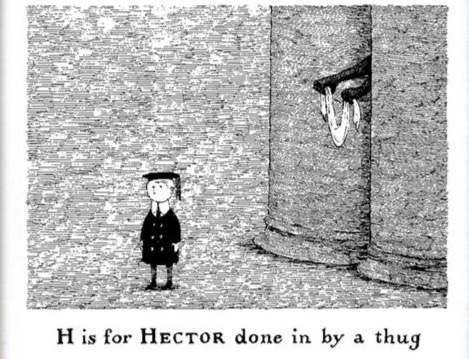
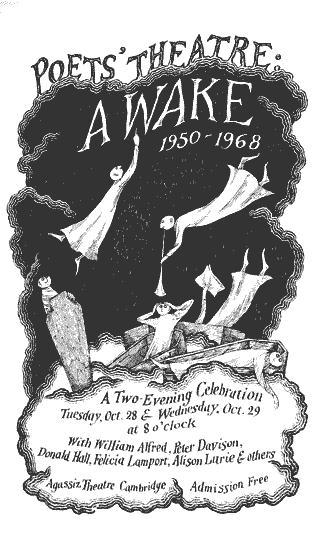




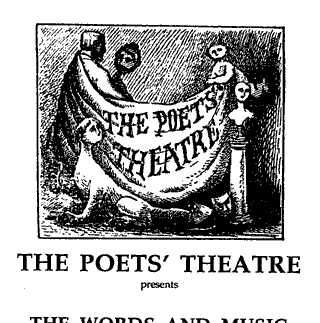












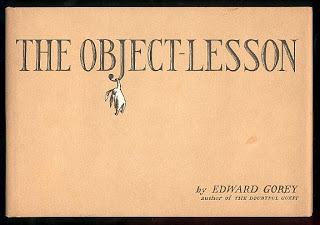



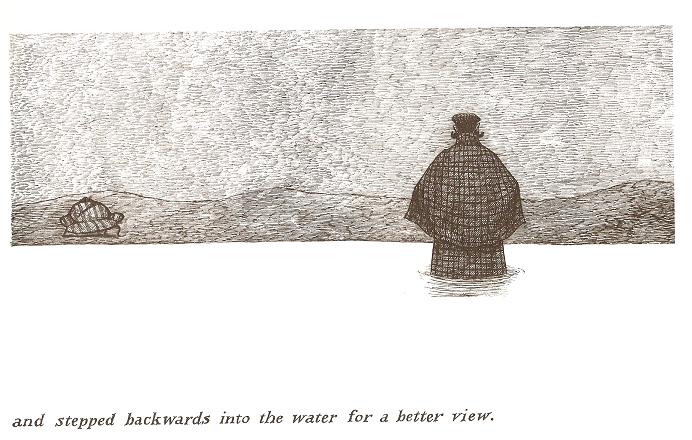











Comments